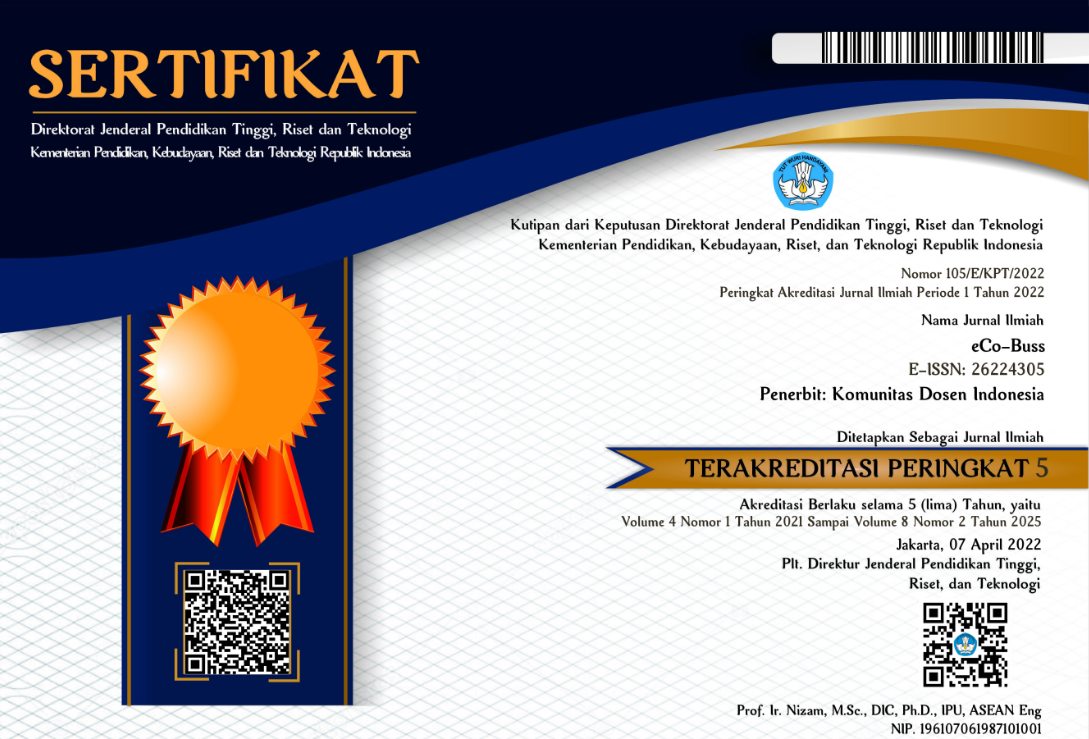Analisis Efektivitas dan Kontribusi Pajak Hiburan Terhadap Pendapatan Asli Daerah Kota Bogor Tahun 2018-2022
DOI:
https://doi.org/10.32877/eb.v6i1.770
Keywords:
effectiveness, contribution, entertainment tax, locally-generated revenue
Abstract
The purpose of this study was to see and analyze the level of effectiveness and contribution of the entertainment tax to Regional Original Revenue from 2018-2022. This research was conducted at BAPENDA Bogor City. This study uses descriptive quantitative methods by collecting, analyzing, interpreting research data to be calculated in order to provide answers to problems regarding the results of the effectiveness and contribution of entertainment tax. Data collection techniques carried out in this study were documentation and observation. This research answers the problem of effectiveness by making a comparison between the realization of the entertainment tax and the target of the entertainment tax and then multiplying it by 100%, as well as the amount of the contribution by comparing the realization of the entertainment tax to the Regional Original Revenue and then multiplying it by 100%. From the research results obtained from the level of effectiveness of the realization of entertainment tax revenue to the target of entertainment tax is 92.35% with the criteria (effective) with a percentage rate of 90% -100%, while the contribution of entertainment tax to the realization of PAD is 2.05% with the criteria (very little contribution) with the percentage results still below 10%.
Downloads
Downloads
Published
How to Cite
Issue
Section
License
Copyright (c) 2023 Ani Apriani, Rahmat Mulyana Dali

This work is licensed under a Creative Commons Attribution-ShareAlike 4.0 International License.






 DOI :
DOI :
 Abstract views: 645
/
Abstract views: 645
/  PDF downloads: 643
PDF downloads: 643

